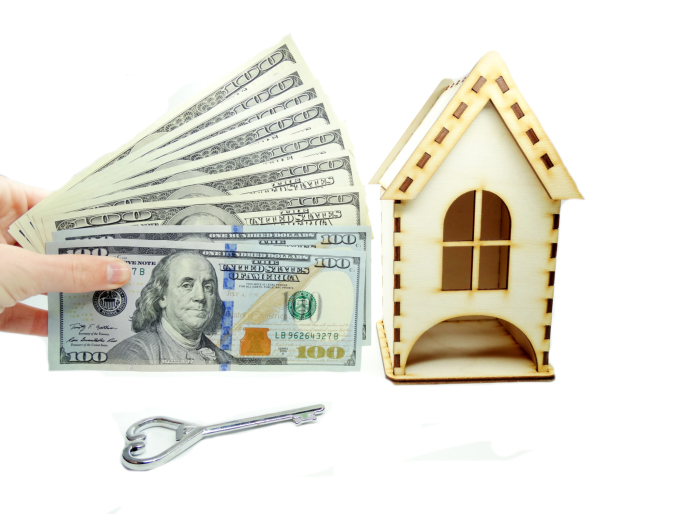 Have you prepared your home for the winter? With colder temperatures starting you’ll need to spend an hour or two getting your home ready to deal with the possibility of harsher weather and below-freezing temperatures, depending on where you live. Let’s take a look at a few quick home maintenance tips that will help you get your house ready for the cold of winter.
Have you prepared your home for the winter? With colder temperatures starting you’ll need to spend an hour or two getting your home ready to deal with the possibility of harsher weather and below-freezing temperatures, depending on where you live. Let’s take a look at a few quick home maintenance tips that will help you get your house ready for the cold of winter.
Check Your Roof, Gutters and Spouts
Your roof is one of the most important structural elements in your home and one that is going face the brunt of any inclement weather that passes through your area. If you feel comfortable on a ladder, climb up and quickly inspect the roof for damage or missing shingles. You’ll also want to clean the gutters and drain spouts, removing leaves and other gunk so that water can flow freely from your roof to the ground.
Drain Your Faucets, Hoses and Irrigation System
If you have exterior faucets and hoses you’ll need to flush out and drain any remaining water before storing them away for the winter. In-ground irrigation systems should have an anti-freezing treatment performed by a professional as freezing can cause a significant amount of damage to pipes and outlets.
Check Your Doors and Windows for Drafts
Leaky windows and doors can cause your heating bill to skyrocket, so spend a few minutes going around the house to inspect seals and frames to see if anything is leaking. Pay close attention to any single-pane windows as leaks can appear over time due to expansion caused by temperature fluctuations. It takes just a few cents worth of caulking to save many dollars in wasted heat.
Store Your A/C and Prep Your Furnace
Finally you’ll want to ensure that your air conditioning unit has been fully shut down and properly stored. If you have an in-ground unit, you’ll also need to cover it to protect it from rain, snow and wind. If you use a furnace to heat your home, be sure to clean or replace its air filter and consider firing the entire system up so you can check the ducts for leaks.
These home maintenance tips will help keep your home in peak condition and prevent damage that can reduce your resale value. If you’re thinking about selling your home, give your local real estate agent a call and they can assist you with getting the process started.
 Many people think that selling a home after the holidays and during the Winter season is a bad idea. Most people are not in the home buying mood, because they are thinking about the holidays.
Many people think that selling a home after the holidays and during the Winter season is a bad idea. Most people are not in the home buying mood, because they are thinking about the holidays. If you pay attention to your credit rating, you may be well aware that a single late payment reflected on your credit report can result in a decline in your scores.
If you pay attention to your credit rating, you may be well aware that a single late payment reflected on your credit report can result in a decline in your scores. If you are thinking about purchasing your first home in the near future, then you need to be aware of the costs that you are going to take on. When you are looking at the cost of a home, it is very tempting to focus on the sticker price of the home. Even though the down payment is going to be the largest check you are going to write, this is not the only cost that you are going to pay.
If you are thinking about purchasing your first home in the near future, then you need to be aware of the costs that you are going to take on. When you are looking at the cost of a home, it is very tempting to focus on the sticker price of the home. Even though the down payment is going to be the largest check you are going to write, this is not the only cost that you are going to pay.
 After all of the excitement of the holidays, the sparkle of the lights and the overstimulation of decorations, the rest of winter can seem lackluster. Don’t let your home add to the dreariness of the season.
After all of the excitement of the holidays, the sparkle of the lights and the overstimulation of decorations, the rest of winter can seem lackluster. Don’t let your home add to the dreariness of the season. If you are thinking about selling your home, then you want to make sure that you get as much money for your home as possible. Therefore, there is a solid chance that you are thinking about all of the places that you watched your kids grow up, the numerous parties that you hosted, and the countless holidays that you celebrated. To you, those memories are priceless.
If you are thinking about selling your home, then you want to make sure that you get as much money for your home as possible. Therefore, there is a solid chance that you are thinking about all of the places that you watched your kids grow up, the numerous parties that you hosted, and the countless holidays that you celebrated. To you, those memories are priceless.  When people are looking for a home, this is an exciting process. There is always something fun about looking at potential homes and envisioning a future there. This is a big decision. At the same time, it is just as important for people to think about how much of their money they should be spending on their mortgage. There are a few rules of thumb that people should keep in mind.
When people are looking for a home, this is an exciting process. There is always something fun about looking at potential homes and envisioning a future there. This is a big decision. At the same time, it is just as important for people to think about how much of their money they should be spending on their mortgage. There are a few rules of thumb that people should keep in mind.  Last week’s economic reporting included readings on housing market conditions, sales of previously owned homes, and housing starts and building permits issued. Weekly reports on mortgage rates and jobless claims were also released.
Last week’s economic reporting included readings on housing market conditions, sales of previously owned homes, and housing starts and building permits issued. Weekly reports on mortgage rates and jobless claims were also released. Are you about to buy a house or condo for the first time? Congratulations! Owning your own piece of real estate is a liberating experience and one that will provide you with the foundation to build your personal wealth and equity. Once you own your own home you’ll be responsible for a variety of new costs, including property taxes which are assessed by your local government to pay for municipal services. In this blog post we’ll share how property taxes work and what you can expect to pay when you buy your new home.
Are you about to buy a house or condo for the first time? Congratulations! Owning your own piece of real estate is a liberating experience and one that will provide you with the foundation to build your personal wealth and equity. Once you own your own home you’ll be responsible for a variety of new costs, including property taxes which are assessed by your local government to pay for municipal services. In this blog post we’ll share how property taxes work and what you can expect to pay when you buy your new home.